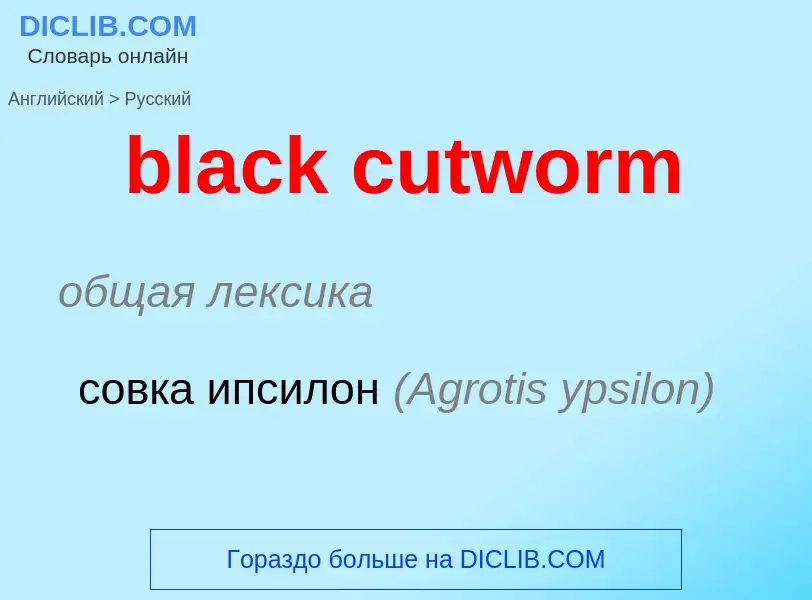Translation and analysis of words by ChatGPT artificial intelligence
On this page you can get a detailed analysis of a word or phrase, produced by the best artificial intelligence technology to date:
- how the word is used
- frequency of use
- it is used more often in oral or written speech
- word translation options
- usage examples (several phrases with translation)
- etymology
black cutworm - translation to russian
общая лексика
совка ипсилон (Agrotis ypsilon)
общая лексика
совка актебия (Actebia fennica)
химия
канальная сажа
Definition
Wikipedia

Agrotis ipsilon, the dark sword-grass, black cutworm, greasy cutworm, floodplain cutworm or ipsilon dart, is a small noctuid moth found worldwide. The moth gets its scientific name from black markings on its forewings shaped like the letter "Y" or the Greek letter upsilon. The larvae are known as "cutworms" because they cut plants and other crops. The larvae are serious agricultural pests and feed on nearly all varieties of vegetables and many important grains.
This species is a seasonal migrant that travels north in the spring and south in the fall to escape extreme temperatures in the summer and winter. The migration patterns reflect how reproduction occurs in the spring and ceases in the fall.
Females release sex pheromones to attract males for mating. Pheromone production and release in females and pheromone responsiveness in males is dependent on the juvenile hormone (JH) and pheromone biosynthesis activating neuropeptide (BPAN). In the span of 2 months, the moth progresses through the life cycle stages egg, larvae, pupa, and adult. Throughout this time period, this moth faces the risk of predation and parasitism, such as by Hexamermis arvalis or by the parasite Archytas cirphis.




